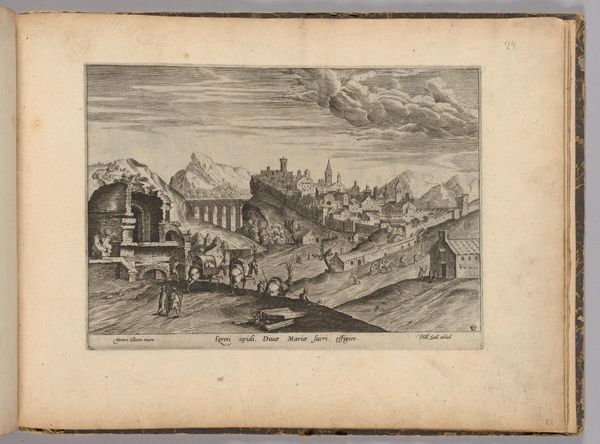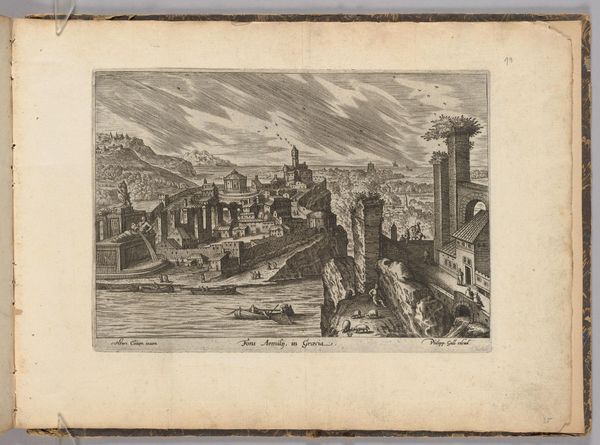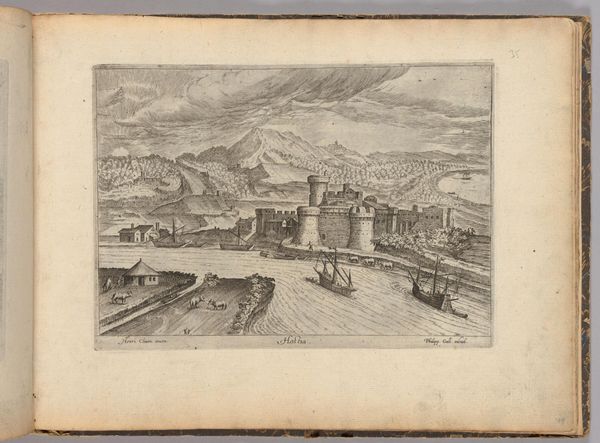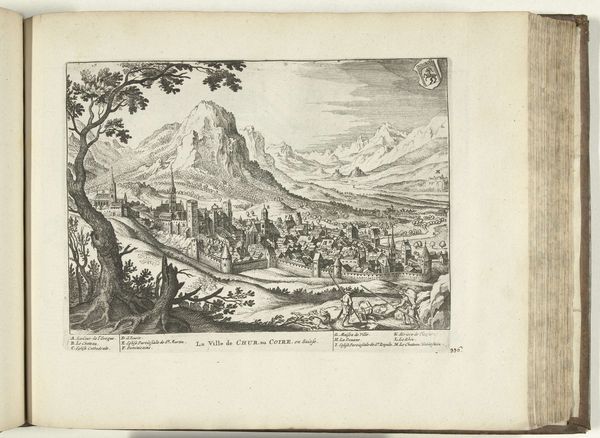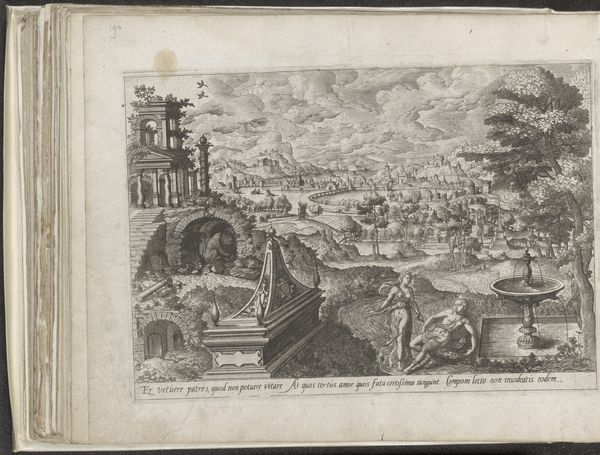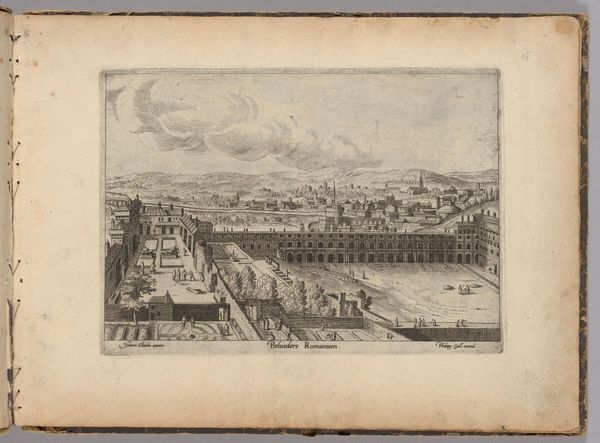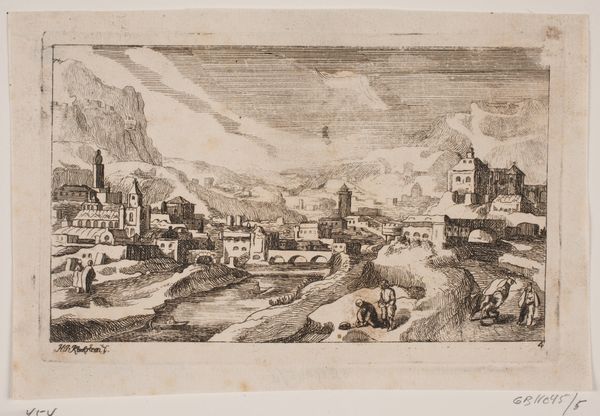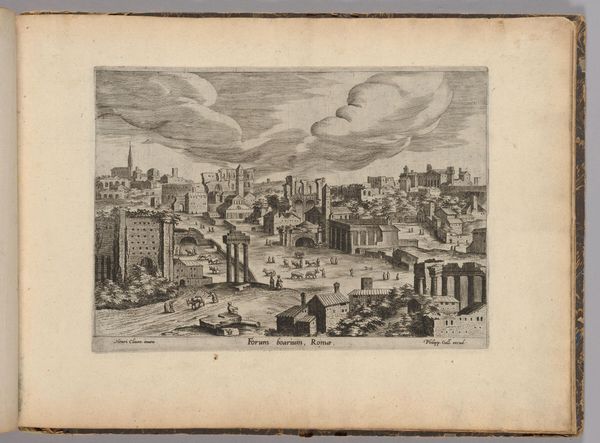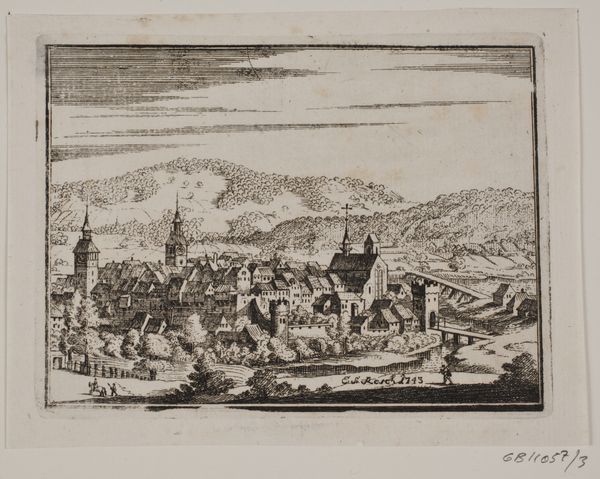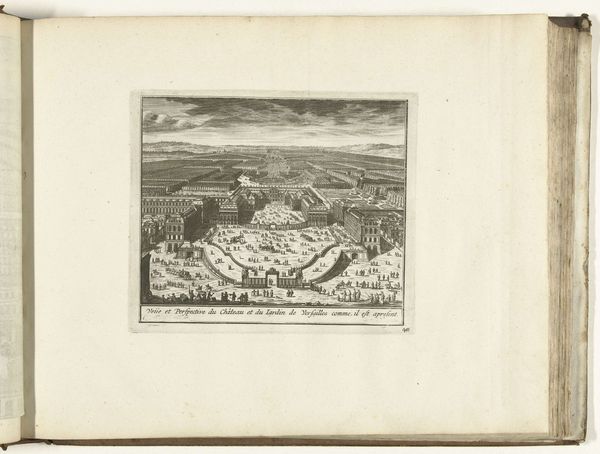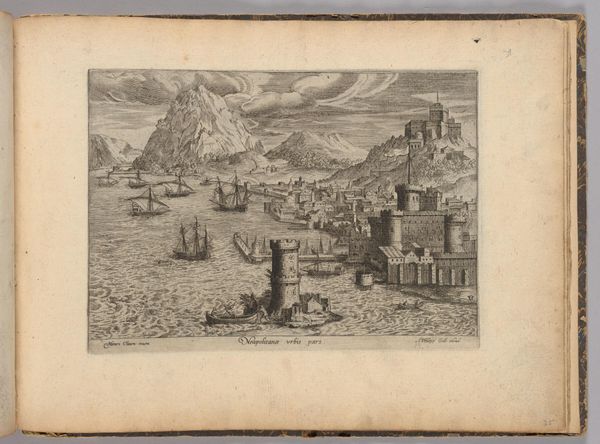
The Temple of Fortune, Palestrina (Templum Fortunae, Praenestae) c. 16th century
0:00
0:00
Dimensions: plate: 18.2 x 25.4 cm (7 3/16 x 10 in.)
Copyright: CC0 1.0
Editor: This is Hendrick van Cleve III's "The Temple of Fortune, Palestrina," an etching. The detail is incredible, but there's a strange tension between the ruined temple and the bustling city around it. What statement do you think the artist is trying to make here? Curator: It's a powerful image, isn't it? Consider that van Cleve was working in the late 16th century, a period grappling with shifting power structures and religious upheaval. The temple, a symbol of ancient Roman power and belief, is presented amidst a changing landscape. Who benefits from the narrative of ruins? Editor: So, you're suggesting the depiction of the ruin is itself a political statement? Curator: Precisely. It asks us to consider what "fortune" truly means – is it the glory of the past, or the resilience of the present? What is lost, and who controls the narrative of that loss? Editor: That adds a whole new layer to how I see the piece. Thanks! Curator: Indeed! Ruins are never neutral; they speak volumes about power, memory, and the stories we choose to tell.
Comments
No comments
Be the first to comment and join the conversation on the ultimate creative platform.
